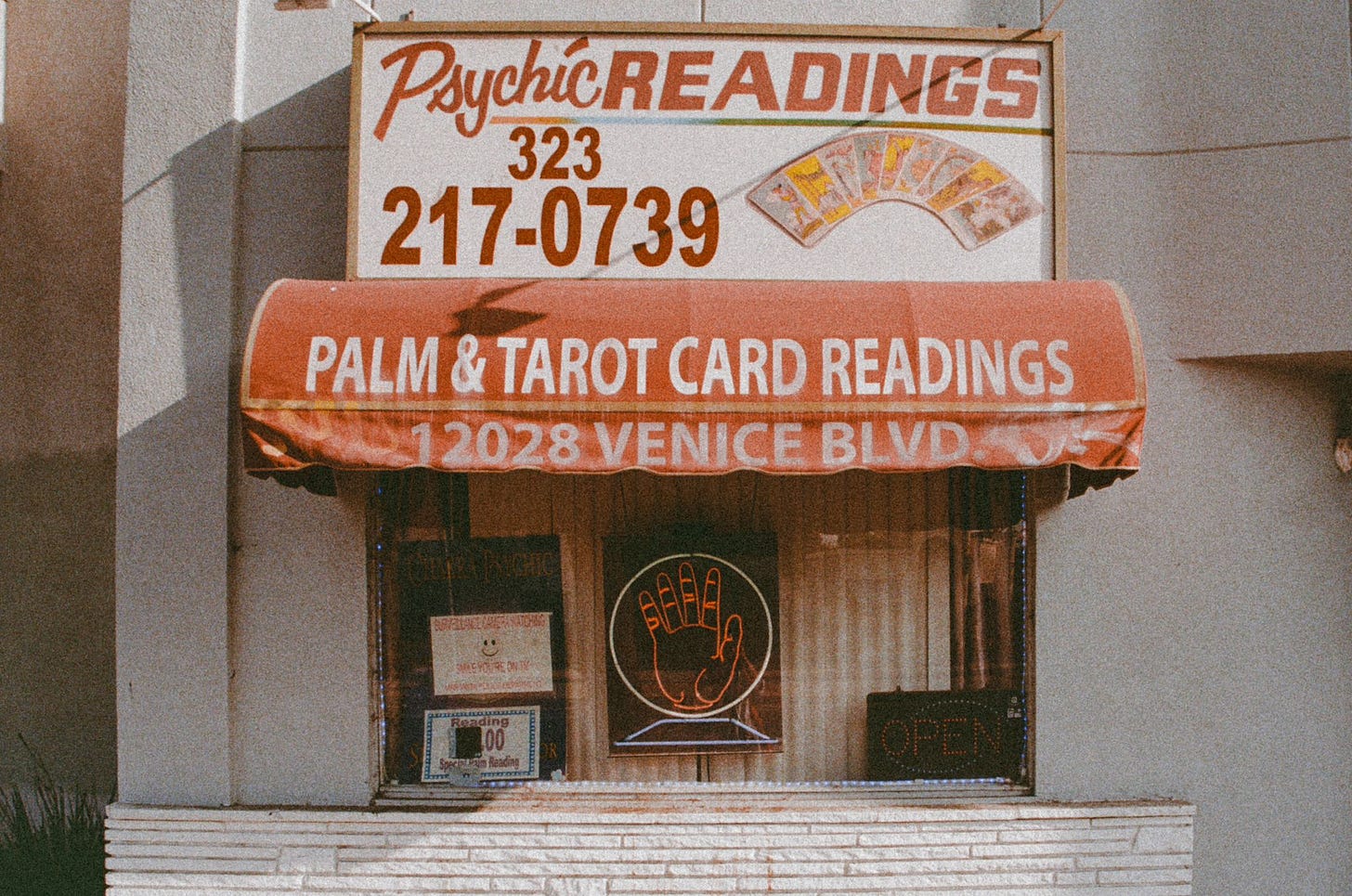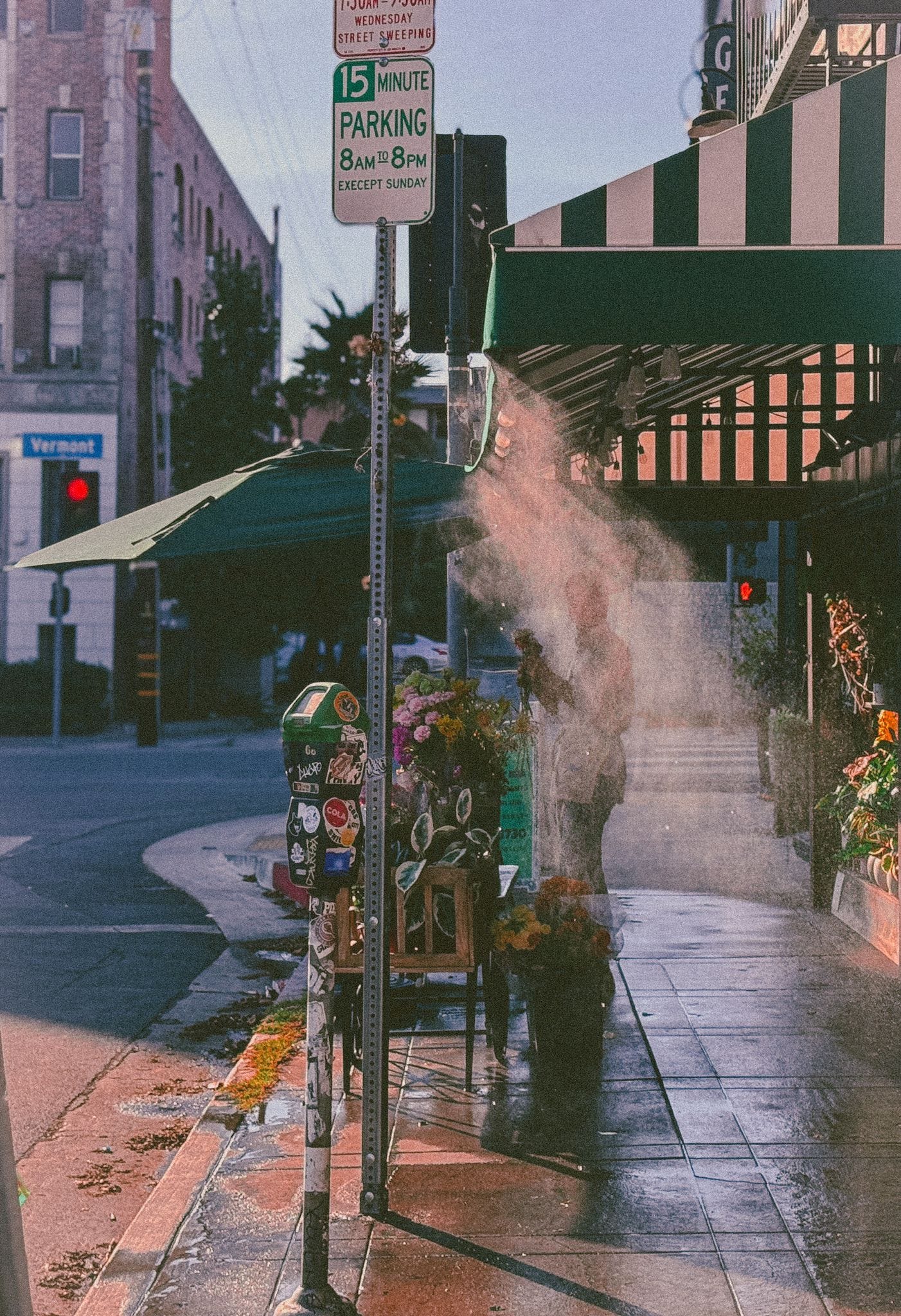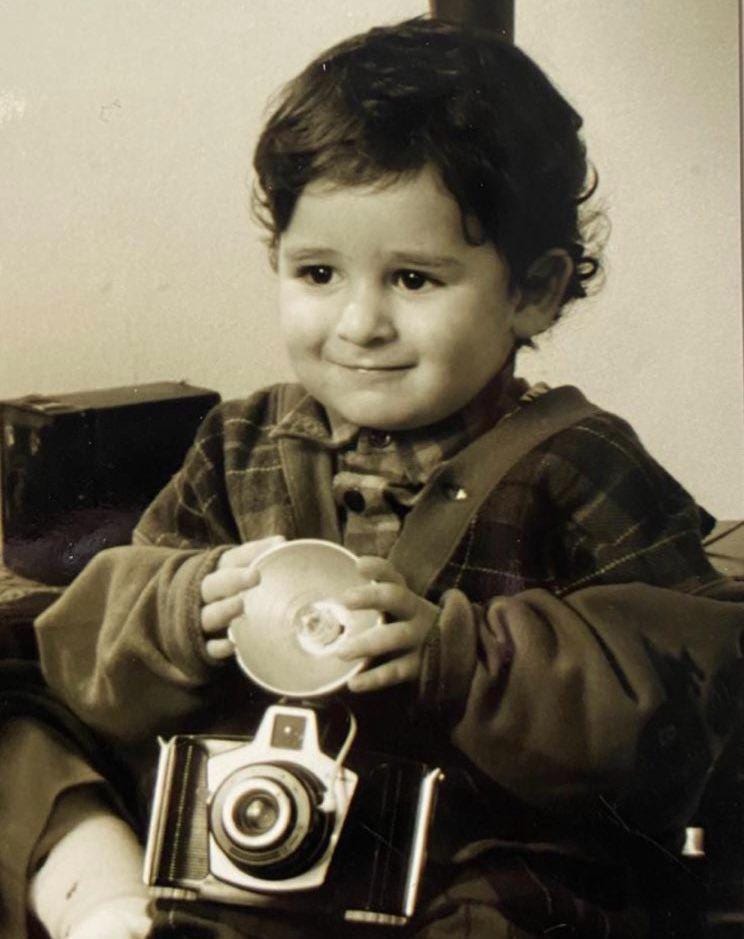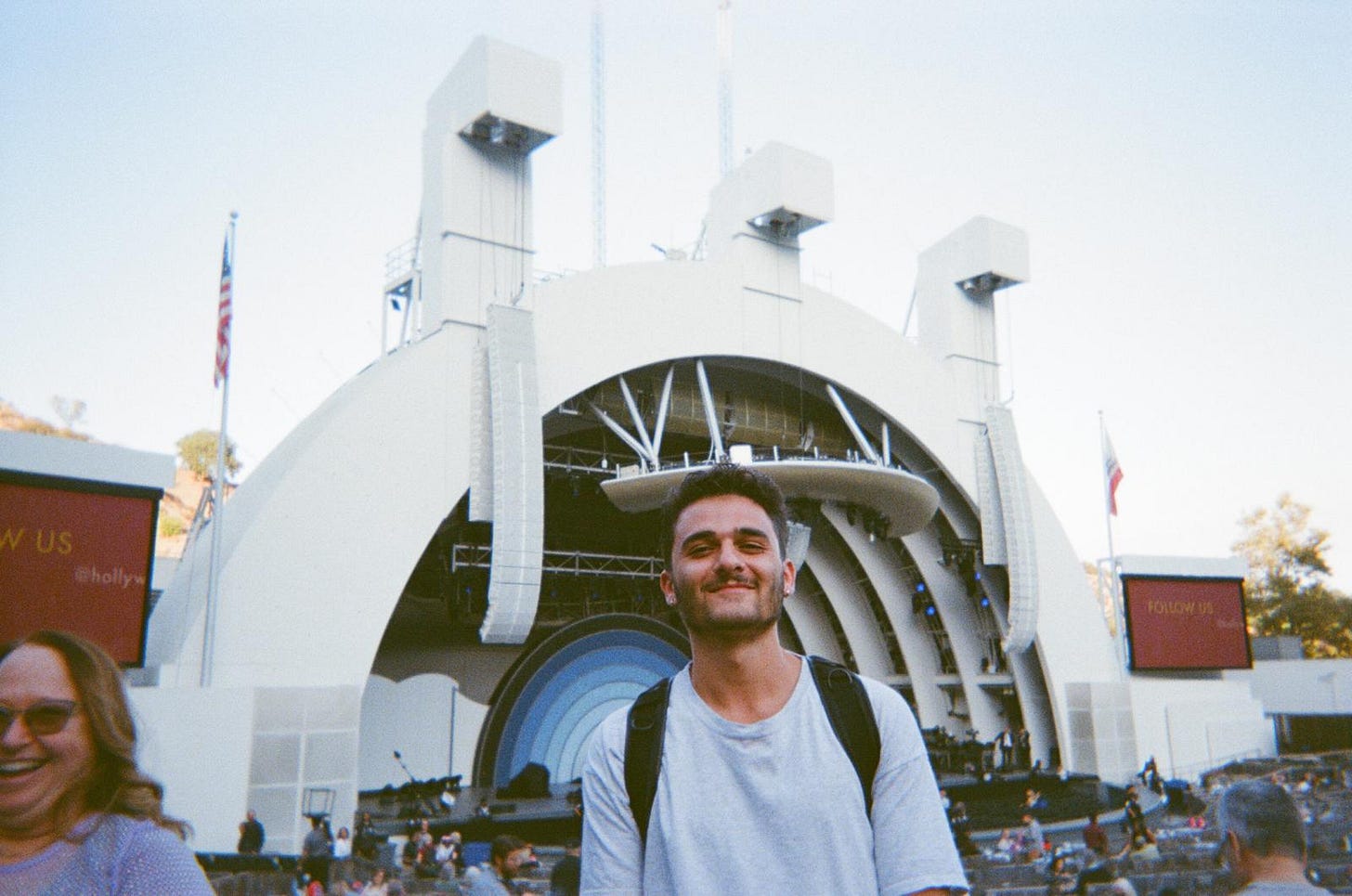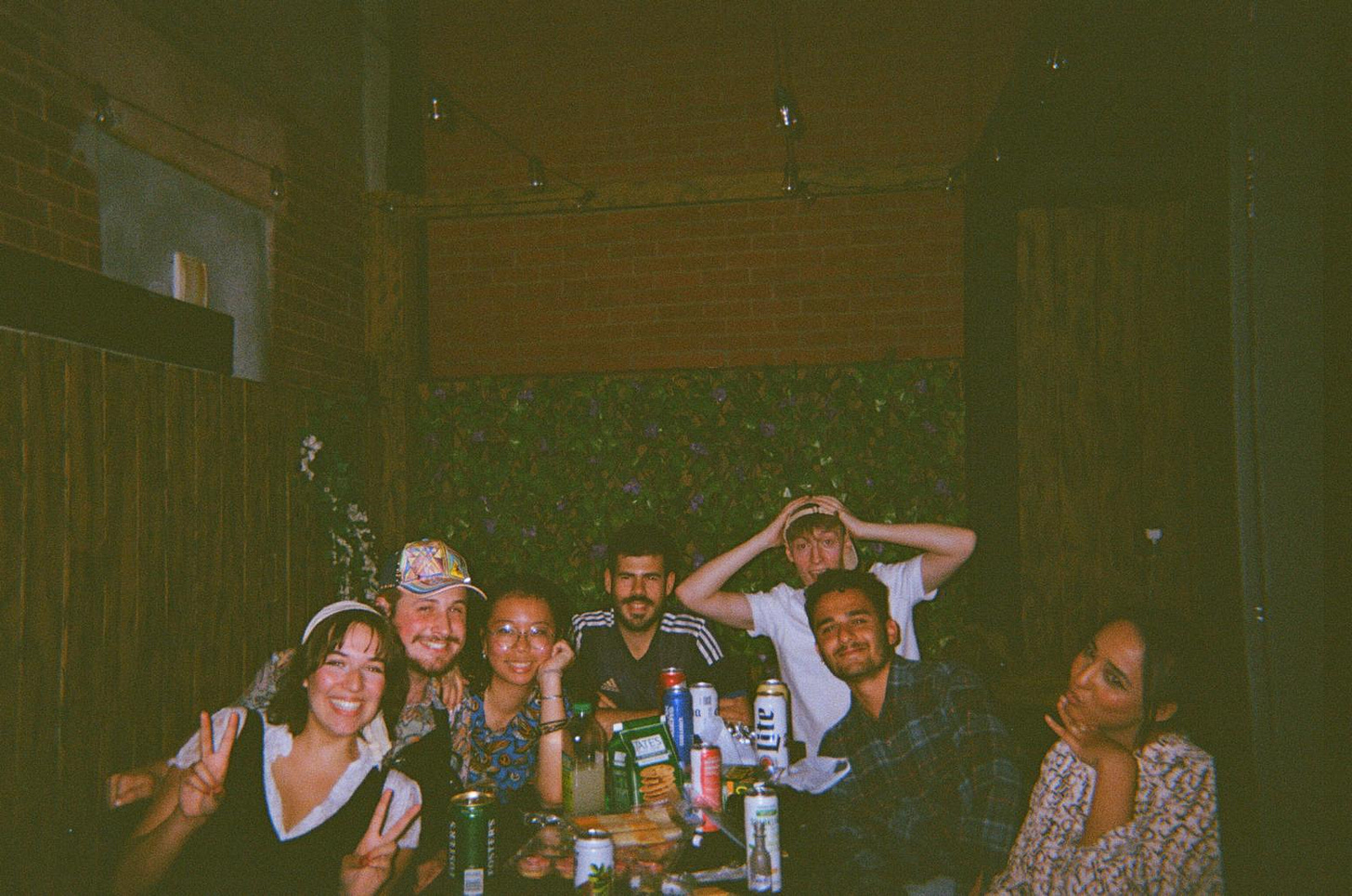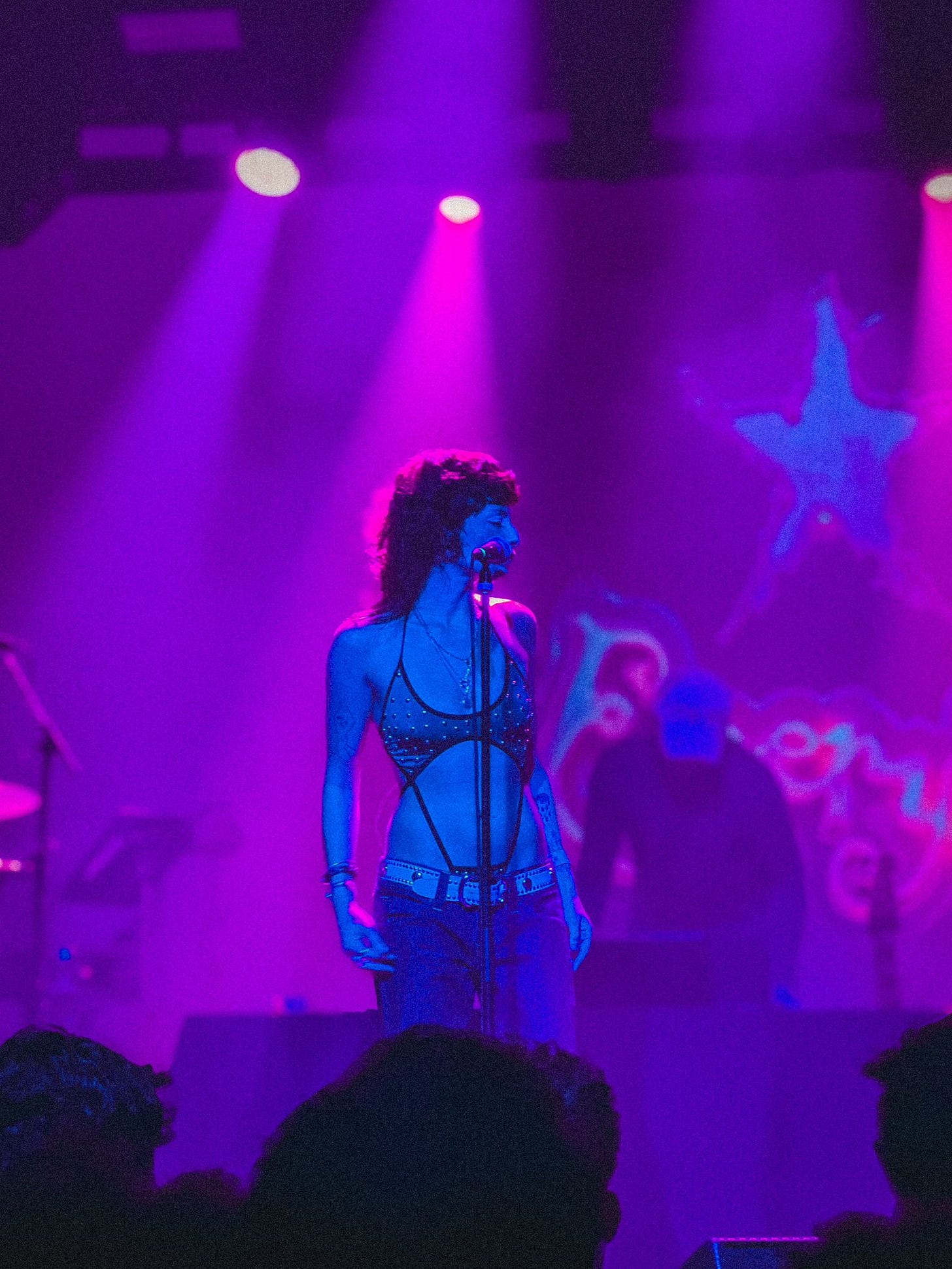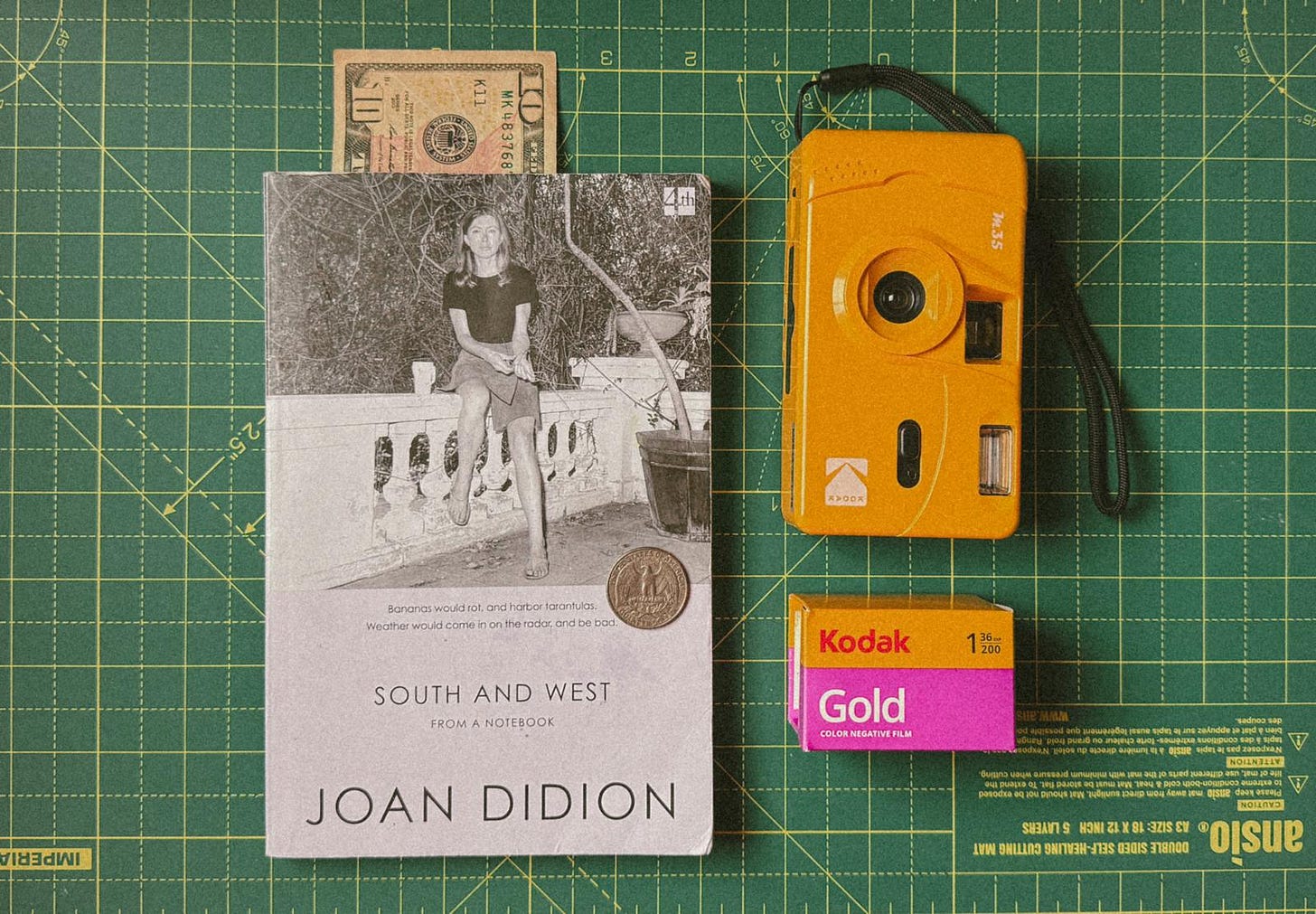When I arrived in Los Angeles on a Wednesday afternoon in mid October, I found myself in the middle of a fever dream I immediately recognised.
As I tried to make my way out of LAX, the atmosphere felt grainy and dense, while the sky seemed infused with a powdery lilac glow.
LA’s stubborn traffic famously leaves you with plenty of time to think and observe, so I looked around at the old liquor store signs, a yellow school bus heading back to the depot after the afternoon run, and a dozen gaudy billboards advertising the services of phoney lawyers and modern-day snake oil salesmen.
At every light, my gaze lingered on the endless rows of utility poles: they stretched as far as the Pacific, connecting the dots of a city with no punctuation, its flow of consciousness as congested as its streets.
It’s a place that felt oddly recognisable, not from having visited it before (which I had) or seeing it in movies (which is how I learned about it), but from a vision, a past life, be it my own or somebody else’s.
LA lived up to its image and cinematic appearance, as if frozen in a celluloid dream where nothing really changed.
You could have told me that the riots were yesterday, and Clinton had just won, and this is 1992, and I wouldn’t have questioned it. I was time travelling again.
My yearning for time travel did not start in Los Angeles but in Naples. In the early 2000s, my grandma’s house became the catalyst for my curiosity; as a child, I spent my days rummaging through drawers, cataloguing items, patching together half a century of history with trinkets and mundane objects that had accumulated through the decades.
Unbeknownst to her, my nonna’s house had become a rich archive in need of organising, and her dining room told me everything I needed to know about the 20th century.
So I became a documentarian before I even learned to spell the word. I turned to the grown-ups and interviewed them about the past - I entertained them with my questions, while they taught me about nostalgia without ever saying the word.
At the same time, I would gather evidence to complement the oral tradition, delving into family folklore, memorising dates of birth and times of death and notable events of a dramatic nature.
That’s when I fell in love with history. The mysteries were plenty but mostly solvable. The past felt certain and reassuring but, at the same time, it left me wondering what to make of the present.
I am a child of the nineties: from my family’s perspective, my arrival marked the halfway point of a decade saturated with the weight of recent milestones and the anticipation of all that was still to come.
I can trace the origins of my fear of missing out to the moment I realised I had been narrowly excluded from what everyone else described to me as very interesting times.
Los Angeles brought out a similar feeling. Much like this mythical past, it seemed to me like a place where extraordinary things happened. A faraway land, a parallel universe, and a different time zone altogether.
The city I saw turned out to be a lot like the LA I thought I knew, a place whose outlines had spontaneously formed in my consciousness through the years I spent watching American TV at the turn of the millennium.
When I finally found myself in it, I went where the currents took me, gravitating towards images I recognised, reinforcing pre-existing visions and cliches.
I’ve never seen my refusal to chase newness as a problem, because so much of what I was discovering about the past still feels fresh and exciting to me. I make a living documenting the present - the rest, if I can help it, is all history.
So life became a travelogue (of pictures/postcards/charms), marked by a compulsion to cannibalise records, recycling pages of a collective past, distilling them into fundamental archetypes and repurposing them to fit new narratives.
At the same time, I am trying to free up some space, and shed some of the digital complexities of modern living. It started with an old camera and a roll of Kodak Gold. Film photography has helped me record experiences more intentionally; the editing starts in the eye, memories and impressions have less clarity but more depth, helping me decide which ones are worth preserving.
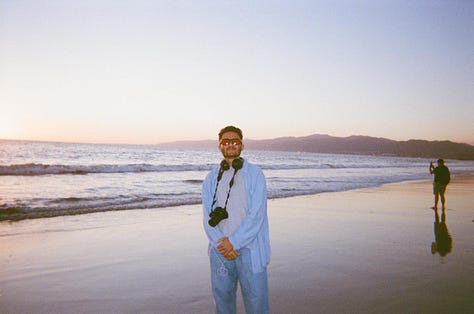

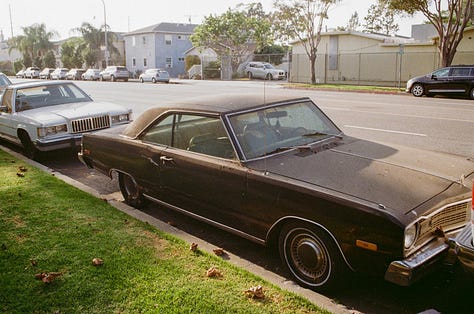

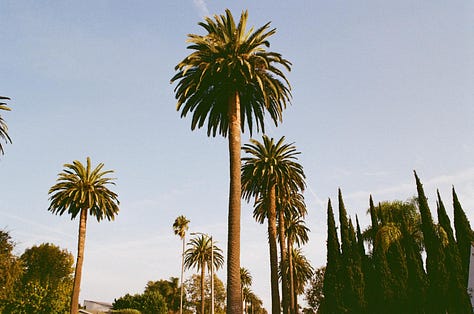
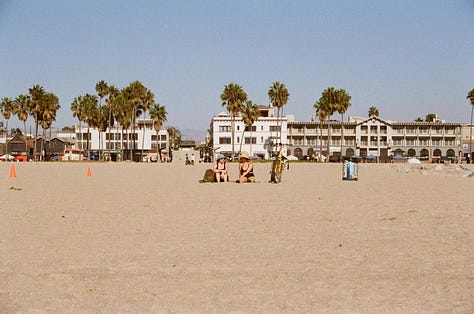
Low contrast, out of focus, grainy and noisy - my push to analogue has now taken a life of its own. The more cynical among you might think I am just buying into an Instagram trend, and that I am replacing substance with an aesthetic vision that will fool me into thinking I live a life worth documenting.
I travel through time, revisiting eras with timeless appeal, parts of history that still feel recent and therefore unfinished. And it all goes back to the decade I was born: many of the anxieties that dominated the nineties have not been fully resolved, and by going back to it I hope to disentangle the personal from the generational, and then again the universal.
And just like that, baggy jeans are back in fashion, I got a job in radio and, in the year 2024, I got to see Joni Mitchell and Annie Lennox sing Ladies of the Canyon one autumn night at the Hollywood Bowl, something I was already too late for ten years ago.
But it happened: Joni cheated death and came back, she won the circle game. When she was done singing ‘Both Sides Now’, her band companion looked at the crowd and asked us: “Can you believe what we’ve just witnessed?”
The crazy thing is that I could.
When that was done, I left LA and went to New York. I took the subway and thought about that photo of Meryl Streep. I remembered 16-year-old me riding the Broadway line one summer many years ago. Downtown and uptown and back again: I walked out of Penn Station and took a photo, hoping it would unlock some other memory. But all I could think about was how the nineties looked so good on New York, even if I never got to see it myself.
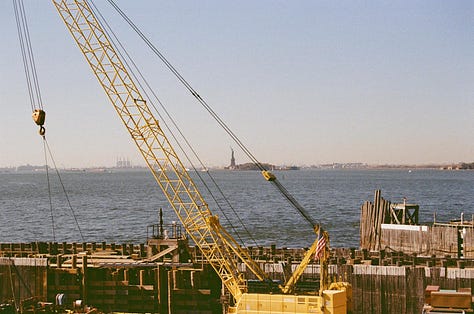
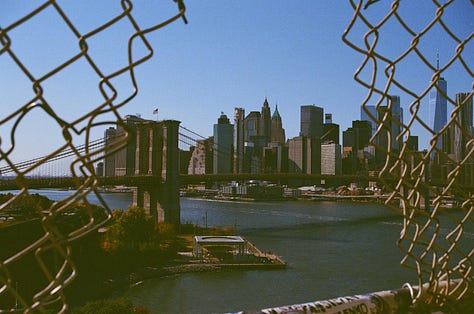
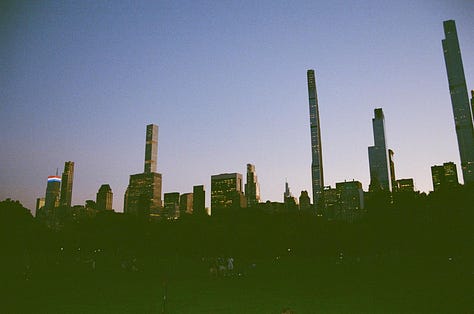
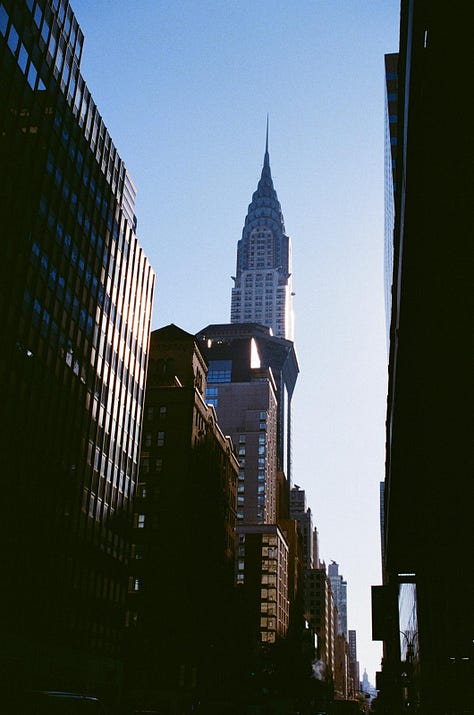

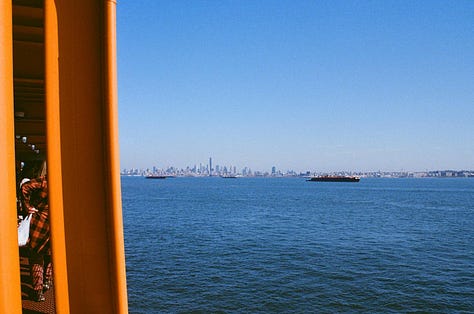
I crossed Manhattan Bridge and saw Brooklyn to my left, I studied the rooftops below, searching for graffiti. Had I been here before? An avalanche of deja vus overcame me. Certain dreams are so intense they take on the quality of memories.
I rode the Staten Island Ferry and remembered what Nora Ephron said, quoting someone else: New York is the place you go to so something can finally happen to you. But my first time in New York was twelve years ago, and a lot has happened to me since. I’m not waiting for life to begin, it’s already here.
And so I take my camera out and rush to record as much as I can before things stop happening to me. In trying to engineer the nostalgia of the future, I learned that the feeling is not just pointless yearning for a lost past, but a way to frame and appreciate the present, a tool for constructing a personal mythology.
From Naples to Los Angeles via London, I am already living through interesting times. The words I write today will be history by tomorrow, and I do it in the hope that 20 years from now, someone somewhere will read my stuff, and look at these pictures, and think God, the 2020s must have been a hell of a time.
- END -
HIT LIST
‘‘Cigarettes Out The Window’’ by TV Girl, an Indie band from California.I got to see them live last summer (not in Los Angeles, but in Victoria Park, just round the corner from me).
Poor little Liddy, she wishes it was dark/But it's never really dark in L.A./The light from the billboard always shines/But it changed twelve times since you went away
“Horny 4 the Pain” by Emeryld, a Texas-born and LA-based emerging artist opened for Lola Young at her gig at the Bellwether in Downtown Los Angeles, which is where I discovered her. She signed with Neon Lights the label that first brought us Charli XCX). You could cut the charisma with a knife.
READING LIST
Joan Didion, South and West: From a Notebook.
Revisiting America’s past, via Joan Didion’s glorious prose, may be the best way understand its future. Reflections on America’s ‘gothic’ deep south and musings on California - as relevant as ever.
“For some years the South and particularly the Gulf Coast had been for America what people were still saying California was, and what California seemed to me not to be: the future, the secret source of malevolent and benevolent energy, the psychic center.”
GOING OUT
The Angel and Crown
In this feature for The Slice, I researched the history of the Angel and Crown, formerly known as the ‘worst pub in London’. Two Italian immigrants recently took over and turned things around - finding inspiration in the 1970s for the pub’s theme. Read here.





